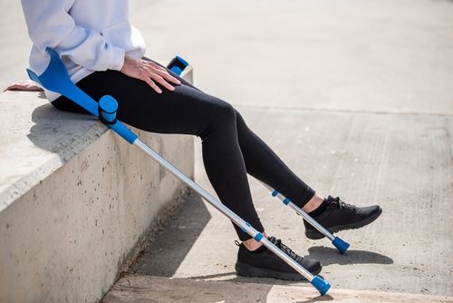When AMAN starts as a reaction to a vaccine, you might qualify for government-funded compensation for your losses. Consider consulting a vaccine attorney to check whether your compensation may be available.
Here is what you need to know about Acute Motor Axonal Neuropathy.
What’s Acute Motor Axonal Neuropathy (AMAN)?
Acute Motor Axonal Neuropathy is a variant of Guillain-Barré Syndrome GBS characterized by sudden onset weakness and loss of muscle control, primarily in the limbs.
In AMAN, the body’s immune system attacks the nerves that control movement, causing sudden onset weakness and loss of muscle control.
Unlike other neuropathies, AMAN lacks demyelination but is more severe and often leaves the patients dependent on a ventilator.
What Are The Symptoms of Acute Motor Axonal Neuropathy
AMAN often starts with tingling and weakness stemming from your feet and legs, which spread to the upper body and arms. It might also start in the arms, face, cranial nerves, and truncal muscles. The weakness may progress for hours or days.
AMAN patients might show respiratory or gastrointestinal problems 2-4 weeks after the first signs.
Common symptoms associated with AMAN include:
- Lack of demyelination
- Facial movement difficulty
- Inability to move eyes or double vision
- Unstable walking or inability to climb or walk stairs
- Weakness in limbs that spreads to the upper body
- Pin and needle sensation in the toe, fingers, wrist, or ankles
- Pain in the shoulder, back, buttocks, and thighs, even with the slightest movements
The weakness might get intense to the point the patient has difficulty performing everyday activities that involve motor neurons.
What’s The Recovery Timeline for Acute Motor Axonal Neuropathy Patients
Most nerve damage from AMAN gets severe for 2-3 weeks, and then the symptoms stabilize after four weeks. Recovery might take weeks, but some patients recover after two years.
According to the National Institute of Neurological Disease and Stroke, around 30% of AMAN patients still have some weakness three years later. While 70% of AMAN patients fully recover, 15% might have long-term weakness and might need support devices to walk.
Effective Treatment Strategies for AMAN
While AMAN has no cure, treatment can help manage it. Treatment involves a combination of:
- Immunotherapy: Physicians administer immunoglobulins (antibodies) to stop the immune response from damaging the nerve.Other times, the doctors can do a plasma exchange or substitute to remove factors triggering the autoimmune response.
- Supportive care: When the symptoms are severe, the patient might require mechanical ventilation or a heart monitor.
- Rehabilitation: Later, physical and occupational therapy might be administered to help patients regain strength, improve coordination, and manage residual symptoms.
What to Do if You Have a Vaccine-Related AMAN
In 1988, Congress created the National Vaccine Injury Compensation Program (VICP) to protect citizens from incurring the cost of vaccine-related complications.
Under the VICP, if you’re diagnosed with AMAN following a vaccination, you can claim compensation for:
- Medical expenses (past and future)
- Rehabilitation cost
- Lost income
- Pain and suffering
- Legal fee (separate from your compensation)
You can protect yourself against vaccine injury expenses.
Call A Vaccine Attorney To Explain More About Your Right For Vaccine-Related AMAN
If your AMAN is vaccine-triggered, consider talking to a vaccine injury lawyer to discuss whether compensation is available. Reach out online for a free consultation.

